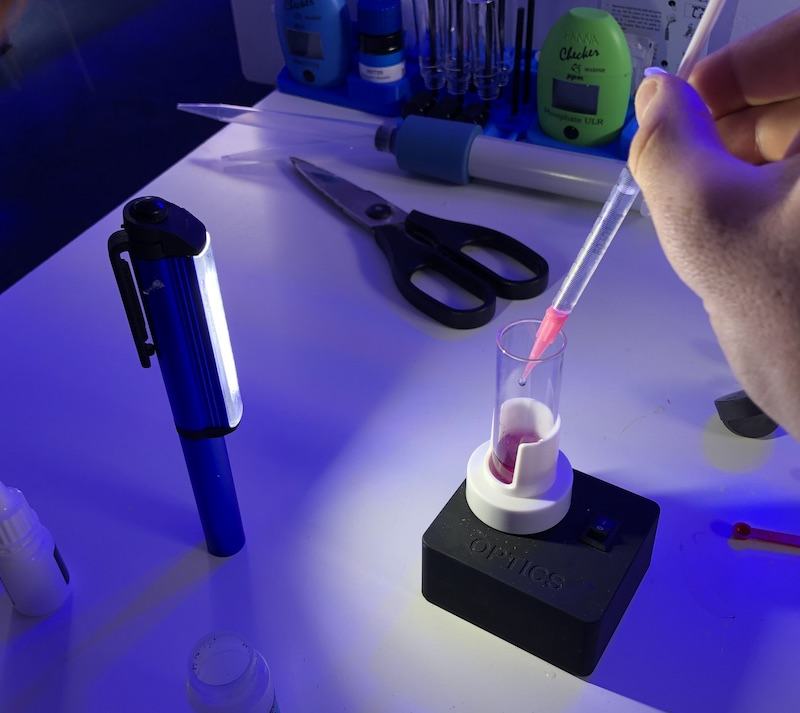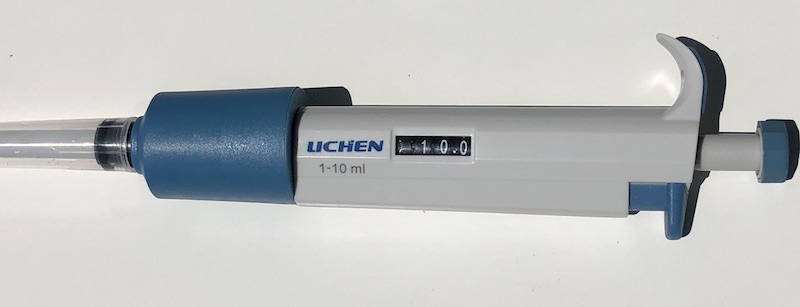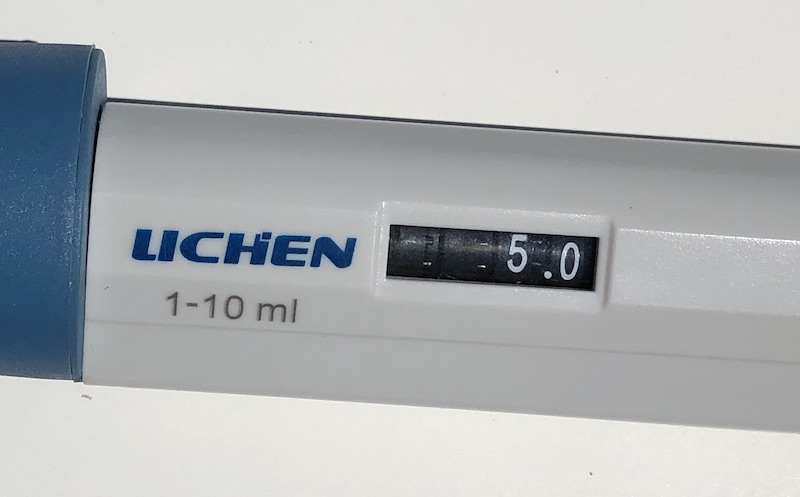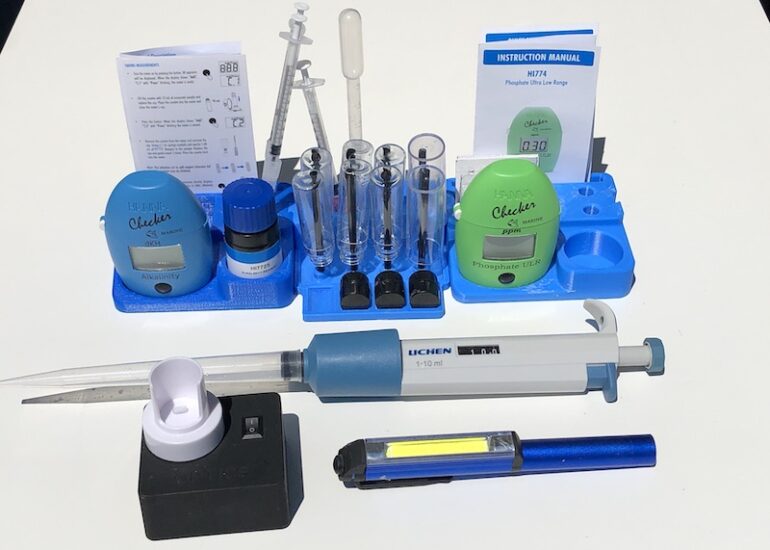We’ve been testing the chemistry of our aquarium water, one or two tanks at a time, for as long as we’ve been building reef tanks. However now with the new Reef Builders Studio we have many more ‘chemical systems’ of water to test, and there’s less room for error since all these tanks need to be show worthy for videos.
Besides temperature, pH and salinity which can all be tested with quick resolving probes, we test calcium, alkalinity, magnesium and phosphate on five different systems (and counting) for a total of 20 test per week. This is very important to keeping all the corals happy and the tanks clean so there’s been a lot of effort placed in streamlining our weekly water testing procedure, and we’ve come to rely on four different accessories that really help condense this procedure.
 The first device that really helped manage all the different test kits is a few sets of 3D printed test holder/organizers from Printed Reefing Solutions. Simply pulling out every test, getting all the reagents, bottles and syringes takes a considerable amount of time, not to mention keeping track of what goes with each test. These 3D printed organizers include several models for different types of tests, and one of the biggest lifesavers is the drying rack and it all interlocks into one nice big testing rack that we can pull out all at once for weekly testing.
The first device that really helped manage all the different test kits is a few sets of 3D printed test holder/organizers from Printed Reefing Solutions. Simply pulling out every test, getting all the reagents, bottles and syringes takes a considerable amount of time, not to mention keeping track of what goes with each test. These 3D printed organizers include several models for different types of tests, and one of the biggest lifesavers is the drying rack and it all interlocks into one nice big testing rack that we can pull out all at once for weekly testing.

The next accessory that really helps our water testing is a basic battery powered light with a wide beam angle. Unlike the typical pocket flashlight that generate a spot of light for seeing in the dark, this type of LED flashlight is a broad illumination of a consistent color that helps determine color changes in titration test kits – a warm colored light really helps to bring our reddish colors to differentiate the change from pink to blue or vice versa.

Folks who have modest hand-eye coordination or bad joints will appreciate the Mini Magnetic Stirrer we reviewed some time last year. Even if you do have great hand eye coordination, using the miniature magnetic stirrer during titration tests really helps users pay attention to when complete titration has been achieved, especially with the help of a dedicated LED light like the one mentioned above.
 These previous three accessories are small improvements to the overall process of testing aquarium water but for us the real ‘game changer’ is the adjustable pipettor. A pipette is a cheap plastic bulb with a tip that is used to suck up an amount of water, but a pipettor is a machine that is specially designed to suck up a very accurate volume of water. If you’ve used the Hanna calcium test kit then the device used to draw 0.1 ml of water sample is a fixed-volume mini pipettor. But what we’re discussing is a much large device that is quick and adjustable, and can draw between 2 and 10 ml of water in 0.1 ml increments.
These previous three accessories are small improvements to the overall process of testing aquarium water but for us the real ‘game changer’ is the adjustable pipettor. A pipette is a cheap plastic bulb with a tip that is used to suck up an amount of water, but a pipettor is a machine that is specially designed to suck up a very accurate volume of water. If you’ve used the Hanna calcium test kit then the device used to draw 0.1 ml of water sample is a fixed-volume mini pipettor. But what we’re discussing is a much large device that is quick and adjustable, and can draw between 2 and 10 ml of water in 0.1 ml increments.

So instead of dunking the test vials into the aquarium repeatedly, and then pouring off the excess (maybe repeating this) and then drying off the outside of the vial, the adjustable pipettor takes a very precise amount of water every time. It’s remarkable how much time it takes to fill a single vial with a specific volume of water sample, and even more apparent when there’s 20 vials to fill, not to mention the pipettor is much more accurate than eye-balling the meniscus on a graduated cylinder.

With so many displays to look after here at the Reef Builders Studio, we’ve really been after the tricks and hacks that allow us to keep them all in peak condition and appearance while minimizing how much time they all take. By streamlining water testing and other procedures we can spend more time enjoying the tanks and making videos about reef tanks, exactly what the studio is all about.



